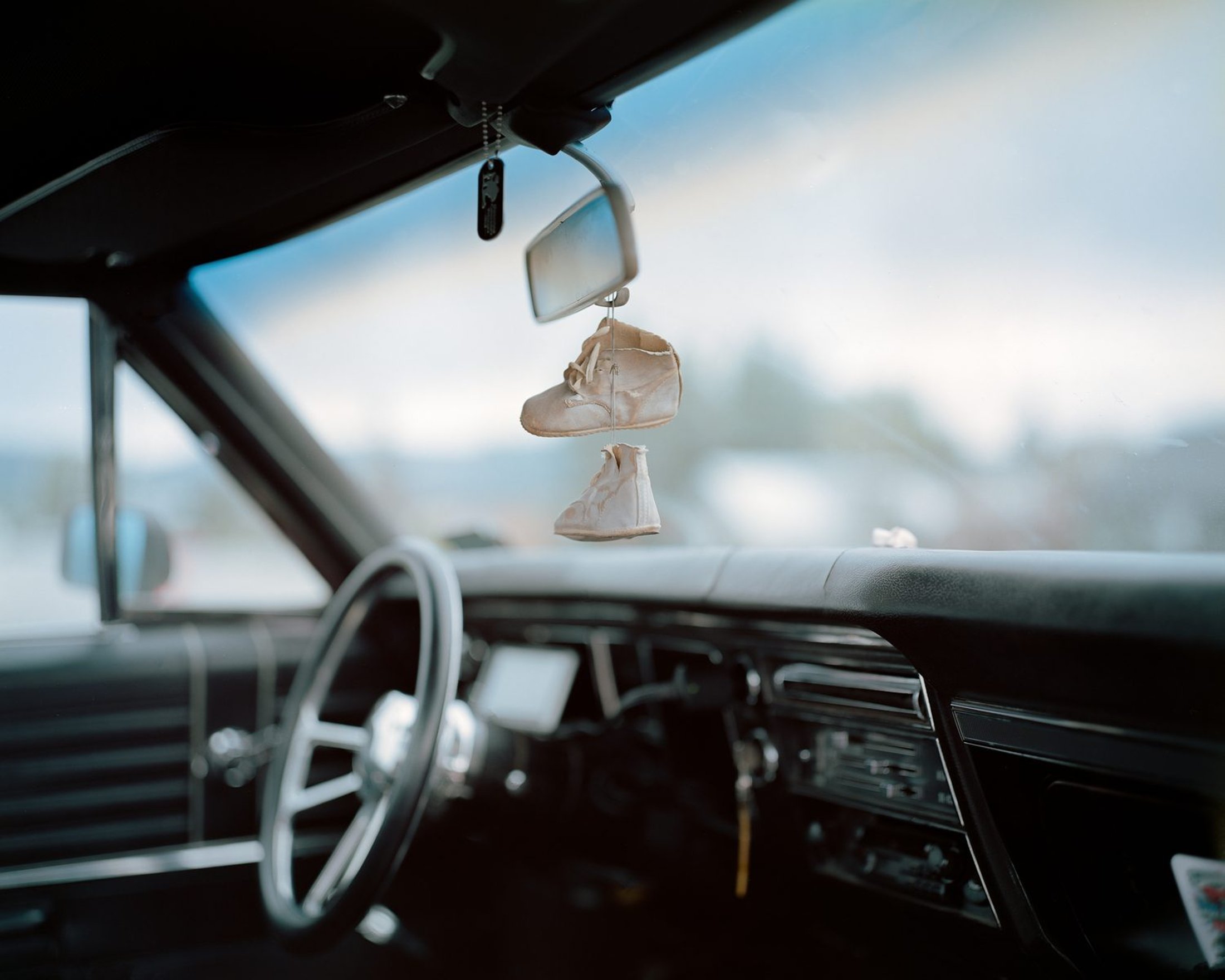“Beauty is in the eye of the beholder.” While this saying has become admittedly trite over the years, it stands true that what we each hold beautiful as individuals can act as a window into our interior worlds. In the photographs of Bryan Birks, cars—that most American of obsessions—are the entry point to the surprising beauty of their owners, portals into people, the communities they belong to, and the aspirations they hold dear.
For Birks, cars are deeply symbolic. “A car can be a lot of things. It can be someone’s main mode of transportation, or it can be someone’s shelter. I see it as a sense of hope,” he notes. “It can take you places. If you have a nicer one, then maybe you have done well financially for yourself. It can be something that you pass down to your kids. Every conversation I have for this project, I feel there is a strong pride in the ownership of the car, and that reflects back in the photographs.”

That notion of pride is deeply felt in Birks’ images. Made up of portraits and environmental details, Articles of Virtu depicts the elemental relationships between people and their cars. The cars themselves were the first draw into a world of collectors, mechanics, and artists in their own right. Driving around his native Midwest, Birks would look for cars to photograph, explaining that, “in the beginning, it would be very old vehicles, but now it has transformed into any vehicle that looks interesting.” The focus has now shifted somewhat, from the object to its owner. “The people play a key role now, whereas, in the past, it was the vehicles themselves.”

As he went on photographing, he realized that he saw plenty of people taking pictures of their cars but no one focusing on their owners. “I didn’t know how to approach people,” he explains, “so I used the car as a way to get in and speak with them. The first person I photographed for the project, before it was a project, was a man named Mark. It was right at the beginning of the pandemic, and I was wanting to keep my distance, but his conversation and demeanor kept pulling me in closer. Eventually, I was inside his house, and he was telling me story after story about all of his vehicles. He named all of them with female names. I ended up asking for his portrait and taking two or three photos. After that, I was keen on keeping up with that and making it into a series.”

It was after photographing Jason and his dog, Diablo, that he first had the feeling the project was truly forming, describing how “it summarized everything that I was trying to say into one single image. The car, the light, man’s best friend, the dirt in Jason’s nails, and even the tattoo on his arm of praying hands. Every time I went out after that, I was trying to recreate that feeling.” Birks’ photographs capture his subjects in cool, blue palettes, touched at times with pinks and golds. As he continued working on the series, he began to see how the car did not need to be front and center—it was the owners themselves who pushed the narrative forward.

Interested in the stories that his subjects tell, he photographs the spaces they inhabit, the details that provide color and insight. The homes and garages of his subjects are filled with memories and mementos—notes, polaroids, books, auto parts. Each image is treated with a genuineness that feels tender. A selective focus softens the photographs and backgrounds fall away gently. A world that can often seem overtly-masculine, and could be rendered as such, is instead visualized with care and emotion.
In Bob’s Car, tiny white baby shoes hang from a car mirror, tinged by what feels like cold early morning light. In Ken’s Garage, we see bits of memorabilia—a framed newspaper article, a calendar featuring a 1959 Corsair Convertible, bits of pegboard, all orbiting a black and white photograph of the rockabilly star Carl Perkins.

The title of the series, Articles of Virtu, is a term most often used in the study of antiques or art historical items. It refers to objects that are considered interesting because of their “rarity, beauty, or appeal to a connoisseur.” For Birks, the association with beauty and connoisseurship was a natural connection. Reflecting on the work, he hopes that the viewer “comes away with a better understanding of people, and more specifically, older men. The best compliments I get are when someone says one of these owners is ‘beautiful’. The men in these photos have been called a lot of things in their lives, but ‘beautiful’ probably isn’t one of them. So, if I can do that for them, then I feel like I have done my job.”
Included with the photographs on his own website are lines from the last stanza of a poem, Washing the Car with my Father, by Afaa Michael Weaver. In it, a blue Chevrolet serves as a common ground, a symbol for the shared love between father and child. As Birks’ photographs show, a car can be so much more than an object: it can be a meeting point, a bond, a whole world of connection.










